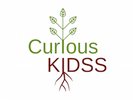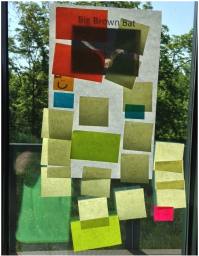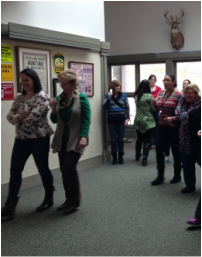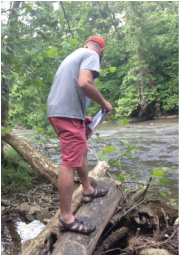Growing Up WILD Supplements
First Impressions and
|
Oh Deer
In the activity Oh Deer, students act out how the deer population and habitat components can change over time. Each student represents a deer or food, water or shelter component of the habitat. Population fluctuation, carrying capacity and limiting factors are introduced in an age-appropriate manner.
|
Field Study Fun
In the activity Field Study Fun, students investigate a field study plot. Over time, they observe and record plant and animal interactions, and record weather conditions. The focus of this field study is for students to study a site to observe the biotic and abiotic changes over the seasons and look for patterns in the data they collect.
|
Supporting Research
Curious KIDSS was developed by drawing on research-based instructional practices. Students benefit from increased time dedicated to science and social studies in elementary classrooms (Doppen, Misco & Patterson, 1998) and from learning in an interdisciplinary approach. Studies have shown that students who learn science and social studies perform better on math and reading assessments.
Gaining Ground (Dyment, 2005) shows that students are positively affected when their school grounds are "greened" by adding wildlife habitat improvements. The students in this study showed improvements in academic achievement, classroom behavior and health that were attributed to these outdoor education experiences. Similar findings were shown in Closing the Achievement Gap: Using the Environment as an Integrating Context for Learning (Liberman & Hoody, 1998). They found student benefits to include "higher scores on standardized measures of academic achievement in reading, writing, math, science, and social studies; reduced discipline and classroom management problems; increased engagement and enthusiasm for learning; and greater pride and ownership in their accomplishments" by implementing integrated instruction built around environmental education.
Environmental education efforts contribute to Ohio benefiting from a better informed public including teachers, students and their parents (Damerell, Howe & Milner-Gulland 2013), regarding environmental awareness and stewardship.
Other research of interest:
The State of Social Studies Instruction in Ohio Doppen, Misco and Patterson. Social Studies Research and Practice. Volume 3, Issue 3, Winter 2008.
Gaining Ground (Dyment, 2005) shows that students are positively affected when their school grounds are "greened" by adding wildlife habitat improvements. The students in this study showed improvements in academic achievement, classroom behavior and health that were attributed to these outdoor education experiences. Similar findings were shown in Closing the Achievement Gap: Using the Environment as an Integrating Context for Learning (Liberman & Hoody, 1998). They found student benefits to include "higher scores on standardized measures of academic achievement in reading, writing, math, science, and social studies; reduced discipline and classroom management problems; increased engagement and enthusiasm for learning; and greater pride and ownership in their accomplishments" by implementing integrated instruction built around environmental education.
Environmental education efforts contribute to Ohio benefiting from a better informed public including teachers, students and their parents (Damerell, Howe & Milner-Gulland 2013), regarding environmental awareness and stewardship.
Other research of interest:
The State of Social Studies Instruction in Ohio Doppen, Misco and Patterson. Social Studies Research and Practice. Volume 3, Issue 3, Winter 2008.




